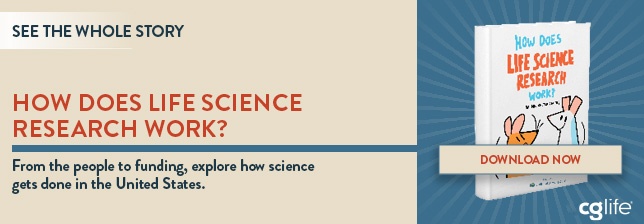Part 3: The Money
Money doesn’t grow on trees, and until researchers can optimize CRISPR to change that, scientists will continue applying for research grants.
Academic labs are like small businesses; they need money to pay their employees (lab managers, post-docs, graduate students), and funds for purchasing chemicals and instrumentation. In the life sciences, many principal investigators and students apply to the National Institute of Health (NIH). In 2014, the NIH reviewed 51,073 research grant applications, accepted 9,241, and distributed nearly $4.5 billion dollars. Other academic labs find funding from foundations for specific causes, for example the American Cancer Society, and the majority of clinical trials in the U.S. are funded through industry, not government funds.
We’ve developed the following light-hearted booklet with the hope of making it easier for scientists and non-scientists to understand how science is funded. This comic looks at how many elements come together every day to deliver new therapies and medicines that benefit life.
At Chempetitive Group, we have a deep passion for life science research—its people, its processes and its promise for the future. In order for life science research to endure, we must continue to highlight its supreme importance and inspire future innovators with effective communication.
Enjoy this post? Be sure to check out Part 1 and Part 2 of this series as well.
